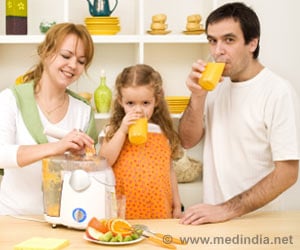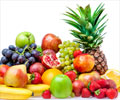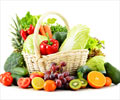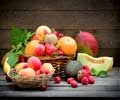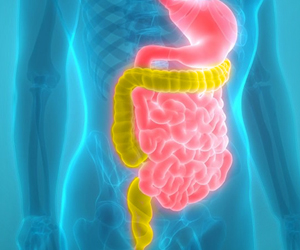
‘High school students are less likely to choose milk and fruit for lunch when fruit juice is available.’
Read More..Tweet it Now
The National School Lunch program reaches over 30 million students, and while fruits, vegetables, and dairy served in the school lunch undoubtedly contribute to a healthy diet, the appropriate role of juice in children's diets has generated debate.Read More..
Currently, the American Academy of Pediatrics recommends that children aged 7-18 consume no more than 8 ounces of juice daily, and juice is permitted to be served as part of the National School Lunch program only on certain days.
"Our findings suggest that on the days when juice is available as a choice in high school lunches, students do not select whole fruit and milk as often. This is a problem because compared to juice, milk and whole fruit are better sources of three nutrients of concern for adolescents - calcium, vitamin D, and fiber," says Marlene Schwartz, Director of the UConn Rudd Center and co-author of the study.
The study utilized cafeteria register data from 3 low-income, Northeast high schools over one school year to determine whether high school students select different meal options on days when juice is available. The study also looked at the sales of a la carte beverages, which included both water and 100% juice.
Key findings include:
- On juice days, 9.9 percent fewer milks and 7.4 percent fewer whole fruit servings were selected with lunches.
- 8.2 percent fewer bottles of water and 24.4 percent fewer bottles of 100 percent juice were sold a la carte when juice was offered.
"The potential nutritional impact of these substitutions is important to consider. For instance, an 8-ounce serving of apple juice has no vitamin D, 285 fewer grams of calcium, and 116 fewer grams of potassium compared to an 8-ounce serving of 1 percent milk," says Rebecca Boehm, lead author of the study and a University of Connecticut Postdoctoral Fellow with the Rudd Center for Food Policy and Obesity and the Zwick Center for Food and Resource Policy.
Advertisement



